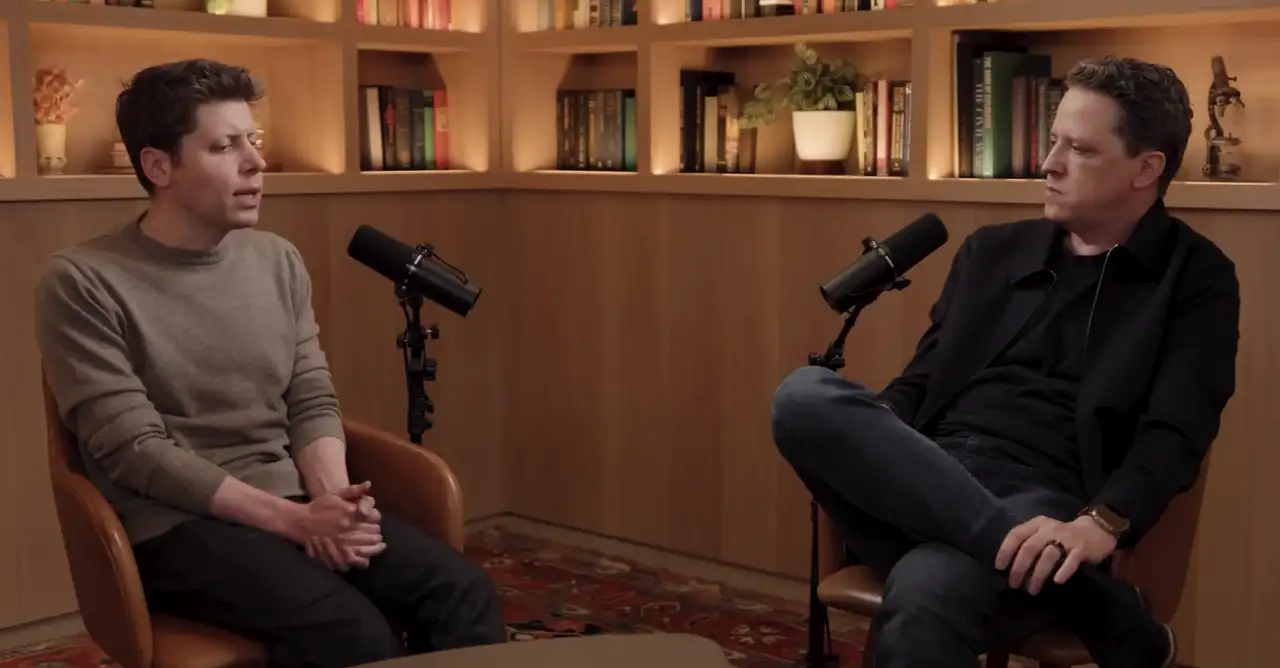GPT-5!Superintelligence, and OpenAI’s bold vision

Vivi Carter · 22, July 2025

OpenAI recently launched its official podcast, and the first episode has already made waves. In a fascinating conversation between OpenAI CEO Sam Altman and host Andrew Mayne (a former OpenAI employee), Altman discussed the much-anticipated release of GPT-5, the ambitious Stargate compute project, collaboration with legendary product designer Jony Ive, and his vision for AI’s transformative impact. Here’s a deeper dive into the main talking points from the interview.
When Is GPT-5 Arriving? A New Era in AI Progress
The most exciting moment of the podcast? Sam Altman confirmed that GPT-5 could arrive as early as this summer. But there’s more to the story: OpenAI is considering a major shift in how its AI models are labeled and released.
In the past, OpenAI’s model updates felt like sweeping software upgrades—big leaps from GPT-3 to GPT-4, for example. However, as the systems become increasingly complex, Altman explained the importance of continuous post-training enhancements. He suggested moving to a clearer, modular versioning system, such as GPT-5.1, 5.2, and so on.
This approach would not only make the iterative improvements more transparent but also allow users to choose their preferred “snapshot” of the model. Altman hopes this strategy will replace the confusing “mini” updates, like GPT-4o, and pave the way for a cleaner roadmap toward GPT-6 and beyond.
OpenAI’s ongoing innovation is exciting, but Altman's emphasis wasn’t merely about naming models—it was about maintaining user trust by signaling a commitment to clarity and performance.
Revolutionizing Compute: Inside the $500 Billion “Stargate” Project
One of the boldest announcements was the “Project Stargate,” OpenAI’s $500 billion initiative to create unprecedented infrastructure for AI compute.
Breaking the Compute Barrier
Limited computational resources are the biggest bottleneck in advancing AI capabilities. Altman argued that more compute would unlock AI’s transformative potential in ways we can't yet imagine.
Massive Scale
While the rumored $500 billion isn’t a bank deposit, it reflects the funding OpenAI plans to deploy over the coming years. The sheer scale of the project is staggering—Altman mentioned visiting the first construction site in Abilene and being awestruck by the operation's speed and magnitude.
Challenges of Global Cooperation
Altman also addressed the difficulties of building a global supply chain for such an ambitious project. He touched on the public fallout with Elon Musk, clarifying that governments stepping in to ensure fair competition was a smart move.
By likening the availability of AI to electricity in the industrial era, Altman painted a vision of a future where superintelligence is abundant and drives widespread societal change.
Redefining Superintelligence: AGI vs. Scientific Breakthroughs
Altman made an important distinction between artificial general intelligence (AGI) and “superintelligence,” a term he now thinks deserves more focus.
Superintelligence’s Role
For Altman, superintelligence isn’t merely about meeting arbitrary definitions of AGI. It’s about empowering AI systems with the ability to independently drive scientific discoveries—or support humans in doing so.
AI as a Research Tool
Already, AI is reshaping fields like material science, drug development, and coding. Tools like OpenAI’s “Deep Research” are enabling scientists to process and analyze knowledge faster than ever before. Altman envisions superintelligence playing a defining role in propelling breakthroughs that could dramatically improve quality of life for future generations.
This emphasis on science underscores the practical value of AI as transformative—not just innovative.

Teaming Up with Jony Ive: Hardware for an AI World
In a move that merges cutting-edge AI with world-class design, Altman confirmed that OpenAI has partnered with Apple’s former chief designer, Jony Ive, to envision a new category of AI hardware.
Why New Hardware?
Altman believes the tools we use today—smartphones, laptops, etc.—were designed for a world without pervasive AI. The future demands devices that are tailored to continuous, context-aware interactivity with intelligent systems.
What Might It Look Like?
Altman hinted that these devices will integrate seamlessly into our lives, understanding our preferences and contexts. Imagine hardware that can attend meetings on your behalf, interpret your goals, and automate your communications—without being intrusive.
While no release timelines were shared, Altman assured listeners that the collaboration is focused on uncompromising quality, and the wait will be worth it.
Data Privacy and the Business Side of AI
No Compromises on Privacy
Addressing concerns around user privacy, Altman doubled down on OpenAI’s stance. He flatly criticized what he called New York Times' “overreach” in a recent lawsuit demanding chat logs, illustrating OpenAI’s commitment to defending privacy—even in the face of pressure.
To Advertise or Not to Advertise?
On the polarizing topic of advertisements in AI products, Altman said he is “open but very cautious.” Ads could undermine trust, a cornerstone of OpenAI’s success. For now, he prefers straightforward user-paid models that clearly communicate value without risking biased outputs.
This view reflects OpenAI’s careful balancing act between accessibility, ethics, and sustainability.
Advice for the Next Generation: Skills for the AI Age
Altman closed the podcast with two key pieces of advice for younger audiences navigating the AI revolution:
Tactically
Learn how to use AI tools effectively. In a world where AI is ubiquitous, the ability to leverage it will be as essential as coding was a decade ago.
Strategically
Focus on building “forever skills” like adaptability, creativity, and emotional intelligence. The value of understanding human needs will only grow as AI continues to automate more technical tasks.
His suggestion highlights a broader truth: mastering AI isn’t about being overwhelmed by technology—it’s about learning to work alongside it.
The Road to the Next AI Revolution
From the imminent arrival of GPT-5 to the long-term vision of superintelligence, Sam Altman’s insights offered a comprehensive view of OpenAI’s ambitions. With multi-billion-dollar infrastructure projects, groundbreaking design partnerships, and a relentless commitment to user trust, the future of AI seems closer than ever—and more transformative than we dared to imagine.
In the AI landscape, the question isn’t just “what’s next,” but “what’s possible.” Altman wants us to prepare for not just one leap forward—but an entire new era of discovery and innovation.
